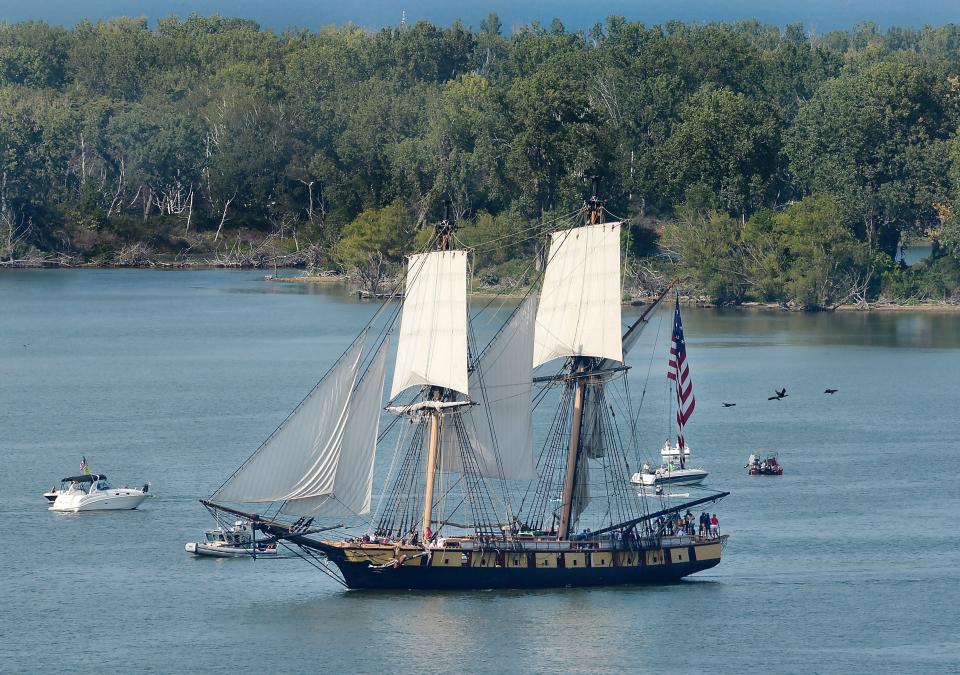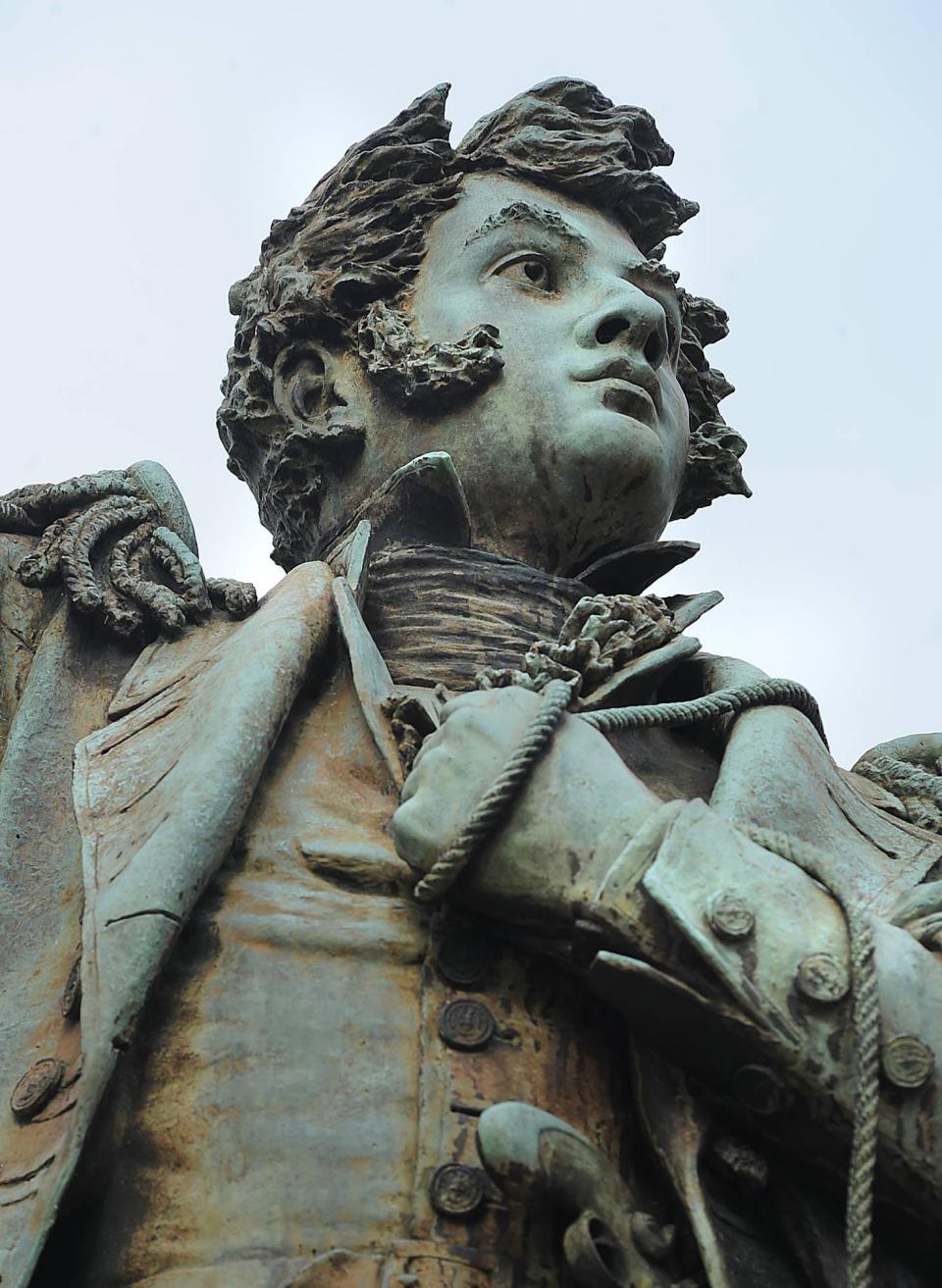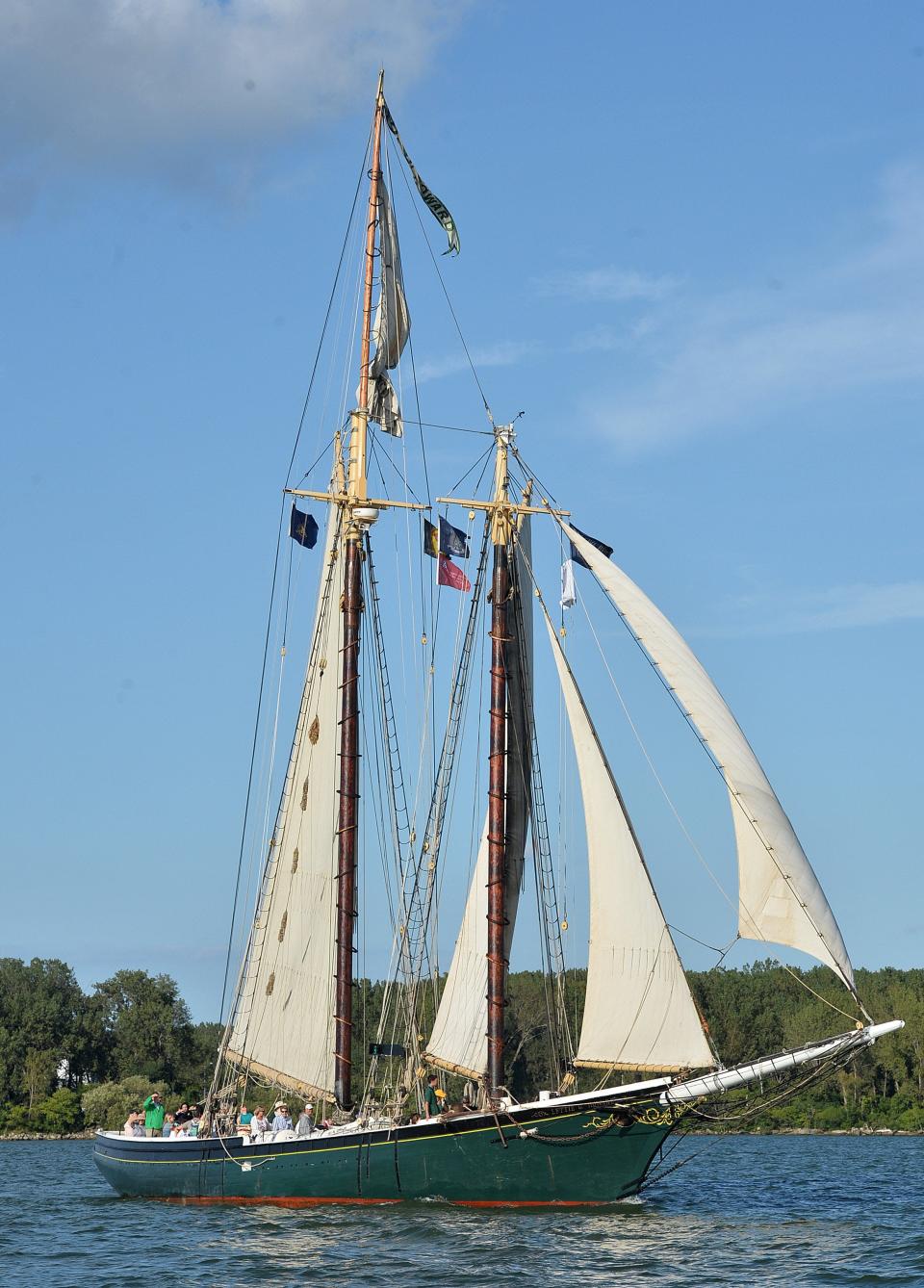So the Brig Niagara won't sail in 2024? Let's bring back the Scorpion schooner
With the U.S. Brig Niagara not available in the summer of 2024, we have the opportunity to learn about the two ships, the Scorpion, a schooner, and the U.S. Brig Caledonia, which arguably may have had more to do with the outcome of the Battle of Lake Erie than the Brig Niagara. First, a little history.
The lead ship in the American fleet, as it closed with the British fleet, was the schooner Scorpion. The Scorpion had a 24-pounder, long-range cannon and fired the first American shot of the battle. The U.S. Brig Lawrence, sister ship to the Brig Niagara, was next in the line behind the schooners Scorpion and Ariel. She moved up to engage the largest British ship, the Detroit. The second largest British vessel, the Queen Charlotte had been positioned two ships further back in their formation to engage the Brig Niagara. However, in one of the most controversial moves of the battle, the Brig Niagara hung back.

Seeing an opportunity, the Queen Charlotte moved up the British line and joined the Detroit in pounding the now outgunned brig, Lawrence. Perry's other (but smaller) brig, Caledonia, which had been positioned behind the Brig Lawrence, moved in and attacked the Queen Charlotte to take pressure off the Brig Lawrence. The schooner Scorpion came about and began attacking the Detroit and Queen Charlotte.
At first glance, one might wonder how effective the three-gun Brig Caledonia and the two-gun schooner Scorpion could be against the two, multi-gunned major British ships. In my opinion, their secret weapon was new technology. Unique among the other ships in both fleets, all five guns on these ships were on swivel mounts, the precursor of today's turrets. The two ships could therefore position themselves at an angle where the British ships could not bring their broadside facing cannon to bear, and pound away at the British ships' decks and rigging with impunity. (Interestingly, it was the Monitor's turret that gave it an advantage over the Virginia in the Civil War).
All the Lawrence's guns were eventually silenced. Over 80% of the crew were dead or wounded (the highest casualty rate in the history of the U.S. Navy) and portions of the vessel were on fire. Somewhat shielded by the dense cannon smoke and, possibly, the Caledonia's hull, Perry had himself and his flag rowed back to the Niagara to bring her forward.

The two major British ships had also taken a pounding. Their rigging was so smashed that they were virtually not maneuverable. Most of their officers were dead or out of action. The senior officer left standing on the Detroit was a 2nd lieutenant in the Marines, who knew little about ship-handling. In their attempt to maneuver, the bow sprit of the Queen Charlotte got tangled in the rigging of the Detroit, leaving them both dead in the water for a while.
Perry arrives aboard the unscathed Niagara and after sustaining several broadsides from the Niagara, the two British ships strike their colors.

Two of the British schooners try to get away but the schooner Scorpion, the fastest ship in either fleet, runs them down and fires a warning shot across one of their bows. They surrender and the Scorpion therefore had the last shot in the battle as well as the first.
It occurred to me that our current schooner Lettie G. Howard and the Scorpion are about the same length, tonnage and rigging. The Maritime Museum has replicas and/or originals of the 32-pounder carronade and 24-pounder long cannon with which the Scorpion was armed. A month ago, I had written to the Flagship Niagara League and the Pennsylvania Historical Museum Commission suggesting the Lettie G. Howard be temporarily reconfigured into a replica of the Scorpion so that we could have a ship of historic significance for tourists to visit or sail on, while we await the return of the Niagara. Now that it looks like we will not have the Niagara this season, I raise the suggestion to Erie Times-News readers.
William R. Miller is the former vice president of research and development at AMSCO. He formerly co-chaired the Erie 2000 study for the Erie Conference in 1984 and has been updating and expanding that study in recent years. He has also served as a volunteer docent at the Erie Maritime Museum, published a book on the Battle of Lake Erie and written a pamphlet for the museum on the Erie Extension Canal.
Author's note: In fairness to the crew of the Detroit, they fought the battle under some severe handicaps. The matched set of cannons shipped from England and intended for the Detroit were captured by the Americans when they raided the British Naval Base at York (today's Toronto) earlier that year. The Detroit therefore had to be equipped with a motley collection of cannons stripped from British forts in the region. The result was that it was armed with guns of six different calibers and gunpowder loads. Imagine the logistics of supplying the ammunition in the heat of battle when every other gun required different loads.
Second, many of the crew had been recruited in Lower Canada (Quebec) and spoke no English. Few British officers were fluent in French. The final handicap was that they were half-starved. With the American fleet preventing resupply from eastern Lake Erie, the thousands of hungry Indian allies who had taken refuge at Detroit and Amherstburg and the relative scarcity of local farms, the crews had been on half rations for a long time.
Perry's crews did not escape problems. The large influx of crews and shipbuilders overwhelmed the relatively primitive sanitary facilities in Erie (500 residents pre-war) and dysentery broke out. Perry himself was sick in bed the day before the fleet sailed, and a significant percentage of the crews were suffering from it.
The Battle of Lake Erie was literally "a fight between the starving and the sick."
Sources: "Three Strikes in the War of 1812" by William R. Miller (Heritage Books); "The Lake Erie Campaign of 1813" by Walter P. Rybka (History Press); "A Signal Victory" by David Skaggs and Gerard Altoff (Naval Institute Press/Bluejacket Books); "The War of 1812" by Donald R. Hickey (University of Illinois); Commodore Perry's Final Report — U.S. Navy Archives; transcript of Commodore Barclay's Court Martial — Royal Navy Archives
This article originally appeared on Erie Times-News: Let Erie's Lettie G. Howard stand in for the Scorpion schooner

